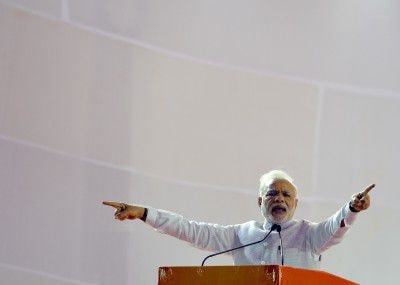Will Modi's arrows hit the target?
(Baonghean.vn)- Narendra Modi, a visionary new leader, has recently come to power in India. He seeks to realize India’s enormous growth potential and make the country a major global player. This has created widespread optimism across the country, and internationally, about India’s resurgence. So what challenges must India overcome to achieve that?
 |
| Narendra Modi is seeking to realize India's huge growth potential and make the country a major global player. Photo: Internet. |
There is broad consensus that structural reforms should focus on three key economic policy arrows, and the new government appears committed to pursuing them. The first arrow is agriculture, where massive market failures have led to widespread consumer price inflation. The second arrow includes reforms to facilitate labor-intensive manufacturing to make the government’s “Make in India” campaign a reality. The third arrow is fiscal restructuring to free up taxpayer resources for major investments in physical and social infrastructure.
Apart from these three major structural reforms, there are believed to be three fundamental factors holding India back. These factors exist in three different but interrelated areas: economic, cultural and social.
Economically, the constraint is a failure to strike the right balance between the market and the state. Fear of the market has long permeated economic policy and civil society in India, tipping the balance in favor of the state, undermining economic efficiency and productivity growth. Crony capitalism is a direct consequence of this imbalance.
The state clearly has a key role to play in regulating markets and providing public goods. But there can also be state and market failures due to excessive state intervention. The Indian agricultural trade, which prevents farmers from selling their produce directly to the market, is a good example. Like other monopolies, state monopolies are vulnerable to inefficiencies due to lack of competition, and are also susceptible to bribery.
But even as the Indian state overextended its role in regulating, controlling, and replacing markets, it failed to invest enough in critical physical and social infrastructure, which in turn constrained productivity and income growth.
While market fears have tended to limit gains in efficiency and productivity, on the cultural front India’s strong inward orientation has constrained competitiveness in a rapidly globalizing economy. India is now an outlier among emerging market economies in managing structural current account deficits.
Despite sweeping trade reforms in the early 1990s, India remains one of the most protectionist of the world’s major economies. While East Asia has been circling the world to learn and adopt global best practices in an effort to catch up quickly, India seems to think it is different, has little to learn from the experiences of others and must chart its own unique course. Of course, it does not have to follow the West in everything, but if India is going to live up to its potential and not fall behind, it needs to engage more with the outside world – both West and East.
On the social front, India must address the social inequalities that limit equal access to opportunities. The caste system has long been a defining feature of India, dividing society into small communities with limited social contact and allowing disproportionate, hierarchical access to opportunities. The lingering effects of caste continue to divide access to opportunity and dehumanize the workforce in civil society.
A notable consequence of these lingering effects is India’s poor human development indicators. This cannot be attributed to scarcity of resources, as the state has propped up a large middle class at the expense of investing in social infrastructure for the underprivileged. A large segment of the population is deprived of opportunities to improve their education and skills. The full potential of the country’s talented people cannot be fully exploited.
India could be the new engine of global growth. Unlike other emerging markets, which rely on external levers to return to high growth, India’s economy is well balanced. The reforms needed are largely domestic, making now the time for India’s revival.
To realize its enormous potential, India needs bold policy and structural reforms in the short to medium term. In particular, it needs to fire three arrows – agriculture, labor-intensive manufacturing, and financial restructuring – from the bow of good governance.
Pulling these strings tight is the immediate challenge for the Modi government. But if India is to sustain high growth over the long term, beat the middle-income trap, and become a major global player, it will also need to change its mindset. Civil society needs to overcome its fears of mayors, engage more fully with the outside world, and provide equal opportunities for its citizens. The real wealth of nations lies in their people.
Thu Giang
(According to East Asia Forum)
| RELATED NEWS |
|---|






